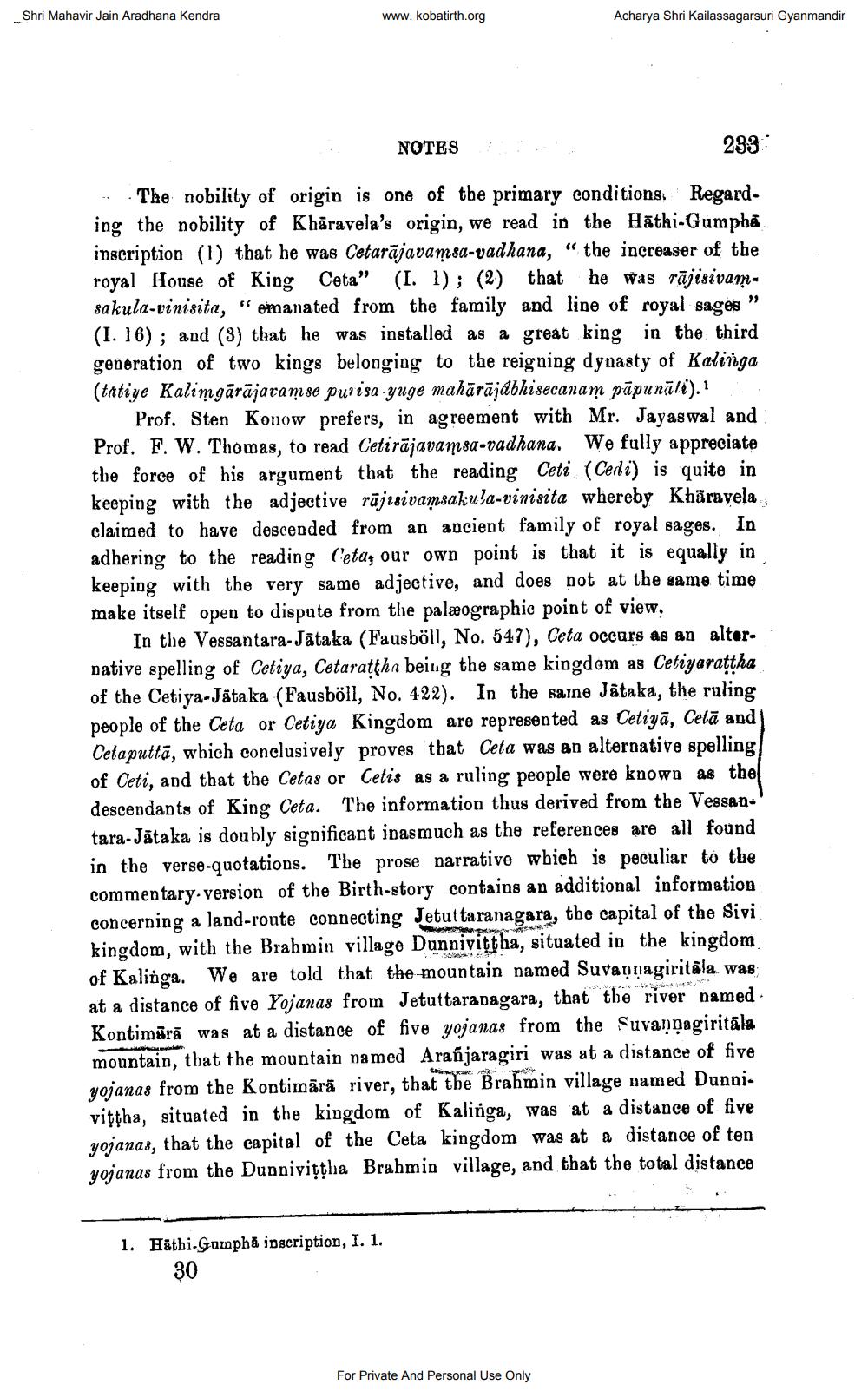________________
Shri Mahavir Jain Aradhana Kendra
www.kobatirth.org
Acharya Shri Kailassagarsuri Gyanmandir
NOTES
293
- The nobility of origin is one of the primary conditions. Regard. ing the nobility of Khāravela's origin, we read in the Hathi-Gumpha inscription (1) that he was Cetarājavamsa-vadhana, “the increaser of the royal House of King Ceta” (I. 1); (2) that he was rājisivamsakula-vinisita, " emanated from the family and line of royal sages” (I. 16); and (3) that he was installed as a great king in the third generation of two kings belonging to the reigning dynasty of Kalinga (tatiye Kalimgārājaramse purisa-yuge mahārājábhisecanam pāpunāté).
Prof. Sten Konow prefers, in agreement with Mr. Jayaswal and Prof. F. W. Thomas, to read Cetirājaramsa-vadhana. We fully appreciate the force of his argument that the reading Ceti (Cedi) is quite in keeping with the adjective rājusivamsakula-vinisita whereby Khāravela claimed to have descended from an ancient family of royal sages. In adhering to the reading Ceta, our own point is that it is equally in keeping with the very same adjective, and does not at the same time make itself open to dispute from the palæographic point of view.
In the Vessantara-Jātaka (Fausböll, No. 547), Ceta occurs as an alternative spelling of Cetiya, Cetaratthn being the same kingdom as Cetiyarattha of the Cetiya-Jätaka (Fausböll, No. 422). In the saine Jataka, the ruling people of the Ceta or Cetiya Kingdom are represented as Cetiyā, Celā and Cetaputtā, which conclusively proves that Ceta was an alternative spelling of Ceti, and that the Cetas or Cetis as a ruling people were known as the descendants of King Ceta. The information thus derived from the Vessan.' tara-Jätaka is doubly significant inasmuch as the references are all found in the verse-quotations. The prose narrative wbich is peculiar to the commentary.version of the Birth-story contains an additional information concerning a land-route connecting Jetuttaranagara, the capital of the Sivi kingdom, with the Brahmin village Dunniviţtha, situated in the kingdom of Kalinga. We are told that the mountain named Suvannagiritāla was at a distance of five Yojanas from Jetuttaranagara, that the river named Kontimārā was at a distance of five yojanas from the Suvannagiritāla mountain, that the mountain named Arañjaragiri was at a distance of five yojanas from the Kontimārā river, that the Brahmin village named Dunni. vittha, situated in the kingdom of Kalinga, was at a distance of five yojanas, that the capital of the Ceta kingdom was at a distance of ten yojanas from the Dunnivițţha Brahmin village, and that the total distance
1. Hātbi.Gunnphá inscription, I. 1.
30
For Private And Personal Use Only




